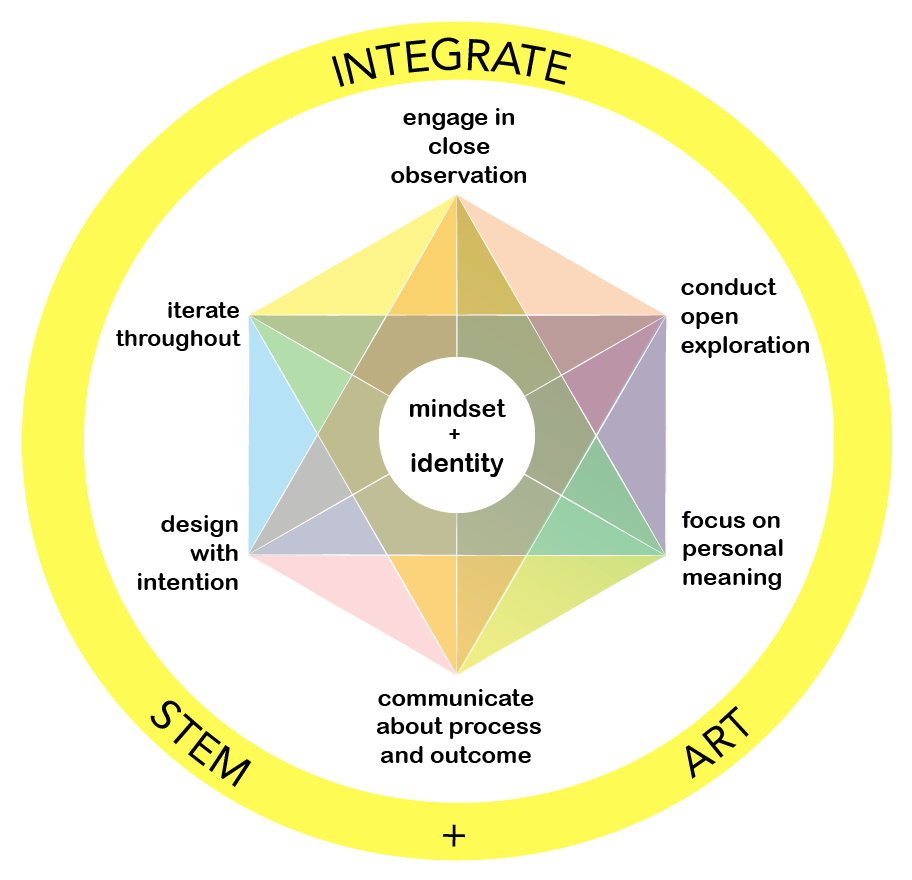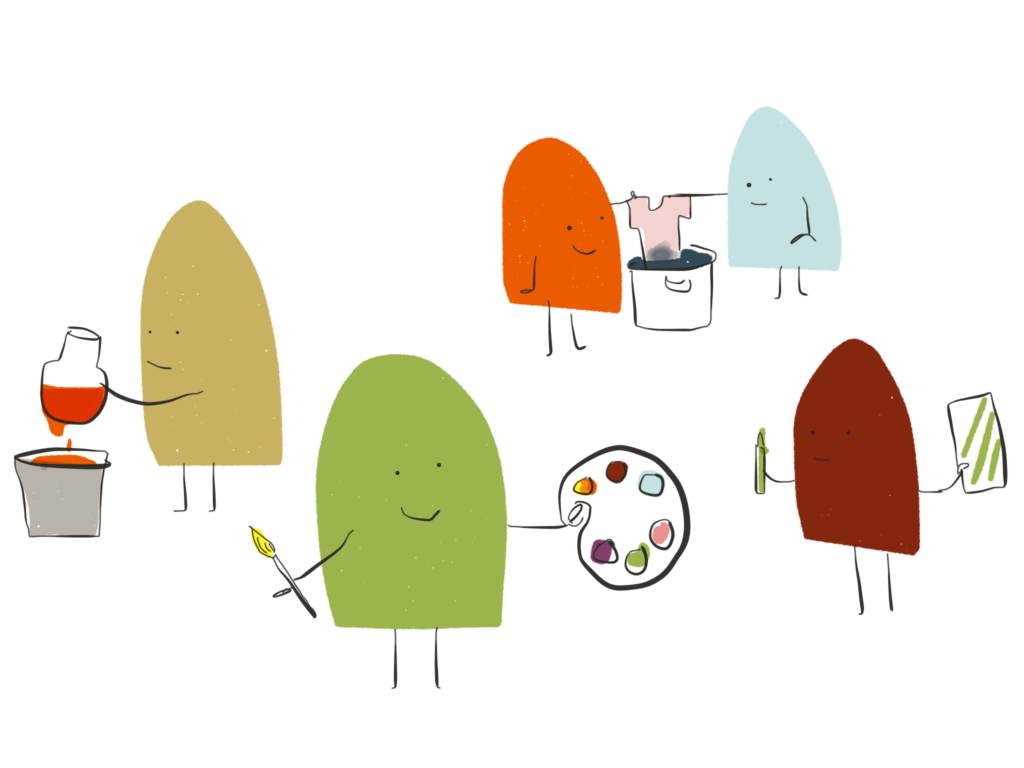
When STEAM activities are designed with intention and care, they can lower barriers to engagement, stimulate creativity, and allow learners to deeply connect with STEM and art.
Our approach focuses on designing and teaching with a set of STEAM practices that promote student engagement in meaningful work. The STEAM practices encourage learners to use multiple modes of inquiry to understand and create the world around them, while fostering identity connections and a STEAM mindset to deepen learning.
Core STEAM Practices

1. Engage in close observation
Engaging in close observation is a core practice of both art and STEM inquiry. Through close observation learners notice patterns, discover connections, and raise questions to better understand the observed object or phenomenon.

2. Focus on personal meaning
Focusing on personal meaning helps learners connect with the concepts that are being explored, by personalizing STEAM for themselves. Although learners may create a product in a STEAM activity, it is important for them to focus on, and engage fully in, the process of creating rather than just the product itself. This helps promote self-compassion and reduces self-judgment about the outcome.

3. Conduct open exploration
Open exploration allows learners to test and work through their own ideas, rather than following a set of instructions that came from someone else. This is a very powerful way for learners to connect with, and take ownership of, the STEM and art concepts and practices that they are participating in.

4. Design with intention
Intentionality, or deliberate and purposeful thought and action, is essential in both art and STEM. It is how we apply our observations, knowledge, and skills to systematically probe new ideas or ask new questions. In STEAM, intentionality includes making deliberate choices about the use of tools and practices from both art and STEM, as well as choices about medium, technique, and composition in support of a creative vision.

5. Iterate
Iteration, another fundamental practice shared by both art and STEM disciplines, is a cyclical process of discovery and problem solving that moves us towards an intended outcome, or goal. The iterative cycle involves pausing to test or evaluate our progress towards that goal and then making adjustments or refinements based on the new information we gain. When learners use this practice in their own work, they can refine their understanding of concepts and practices by iterating through ideas, drafts, prototypes, or models. Fostering awareness and emphasizing the value of iteration helps keep learners actively engaged in the process of STEAM inquiry, rather than focusing only on the outcome.

6. Communicate about process and outcome
Communicating about the process and outcome of STEAM activities allows learners to cross-pollinate ideas and learn from each other, as well as demonstrate their competence and share innovations. Feeling like an emerging expert, and being acknowledged as such by others, is a potent avenue for building identification with STEM and art.
Download a printable handout with the Core STEAM Practices: (PDF 1 page)
To learn more about the STEAM Practices and how they support diverse learners, see Designing STEAM for Broad Participation in Science (Carsten et al., 2017) PDF

The material presented here is based upon work supported by the National Science Foundation under Grant Numbers 1713155 and 1713276. Any opinions, findings, and conclusions or recommendations expressed in this material are those of the author(s) and do not necessarily reflect the views of the National Science Foundation.

